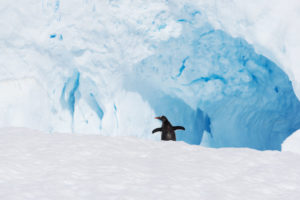by P. Sommer, June 22, 23022 in NoTricksZone
It’s become an annual ritual. Every summer, when there has been little rain for a long time and unreasonable people set fire to forests, whether through intent or negligence, a solution comes into play: wind turbines.
There are people who obstruct wind turbines, supposedly in order to protect forests. But the opposite is true. Every obstructed wind turbine fires up the climate crisis with heat, drought and forest fires.”
(Image: Screenshot Twitter)
Old military grounds pose huge hazard to fire fighters
Of course, this is exactly what is happening with the current forest fire in Treuenbrietzen in Brandenburg, alarmists like Quaschning say. But, if you look very closely you will see that once again a forest area burned that had previously served as a military training area for several decades. Such areas are not easy to extinguish because firefighters put themselves in serious danger as remnants of ammunition are lying around everywhere. So the fire has an easy time when it can only be extinguished from a distance. Or, to put it another way, in forests without remnants of ammunition, firefighters would have fires under control quickly.
Nothing to do with temperature
What would help the forest is precipitation. Temperature is not the determining factor for forest fires, but the absence of rain. The forest would also be helped if people stopped handling fire in the forest during times of drought.
Yet we will read and hear the call for more wind power in the forests every time there is a forest fire from the likes of Big Wind lobbyists Volker Quaschning – and of course, without them addressing the forest floor contaminated with munitions. This has always been the case in recent years and has also been a topic in this blog. By the way, with the same protagonist as this year and almost word-same tweets.
Long-term downward trend
There are people who obstruct wind turbines, supposedly in order to protect forests. But the opposite is true. Every obstructed wind turbine fires up the climate crisis with heat, drought and forest fires.”
Old military grounds pose huge hazard to fire fighters
Of course, this is exactly what is happening with the current forest fire in Treuenbrietzen in Brandenburg, alarmists like Quaschning say. But, if you look very closely you will see that once again a forest area burned that had previously served as a military training area for several decades. Such areas are not easy to extinguish because firefighters put themselves in serious danger as remnants of ammunition are lying around everywhere. So the fire has an easy time when it can only be extinguished from a distance. Or, to put it another way, in forests without remnants of ammunition, firefighters would have fires under control quickly.
Nothing to do with temperature
What would help the forest is precipitation. Temperature is not the determining factor for forest fires, but the absence of rain. The forest would also be helped if people stopped handling fire in the forest during times of drought.
Yet we will read and hear the call for more wind power in the forests every time there is a forest fire from the likes of Big Wind lobbyists Volker Quaschning – and of course, without them addressing the forest floor contaminated with munitions. This has always been the case in recent years and has also been a topic in this blog. By the way, with the same protagonist as this year and almost word-same tweets.
Long-term downward trend
…


